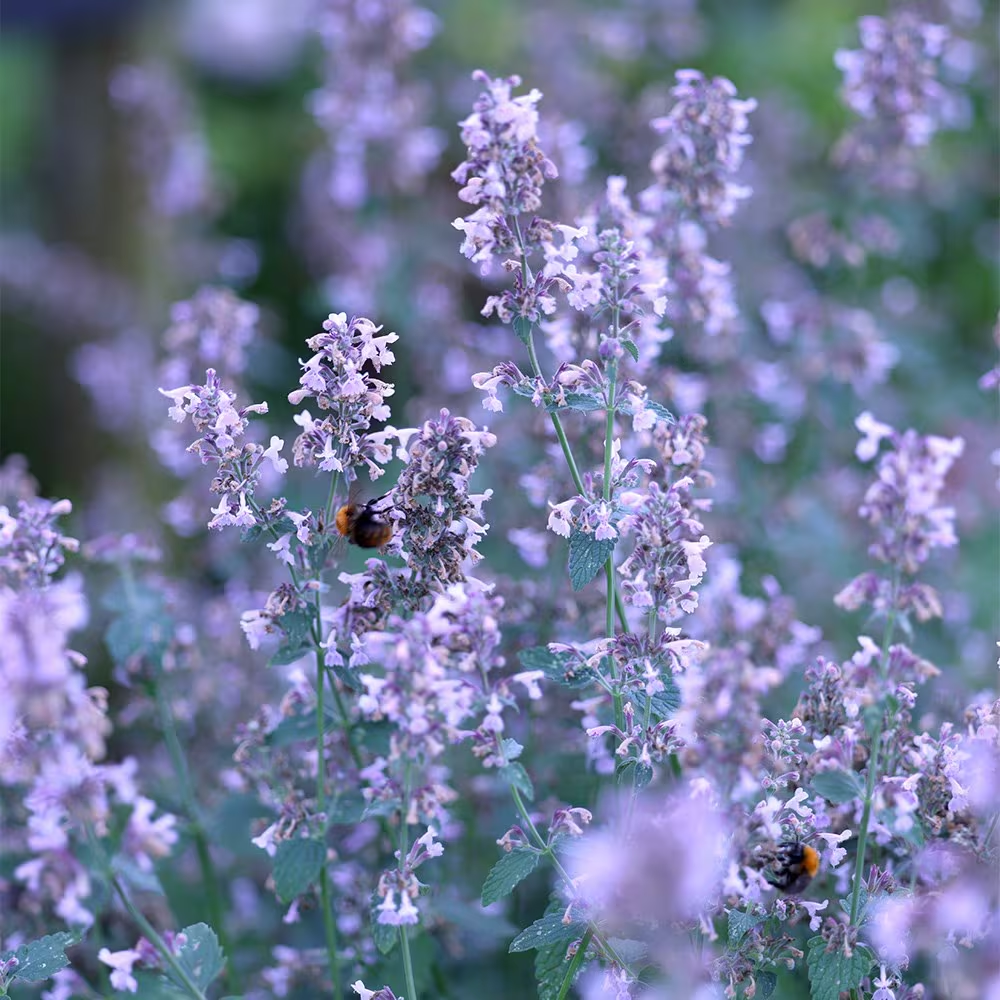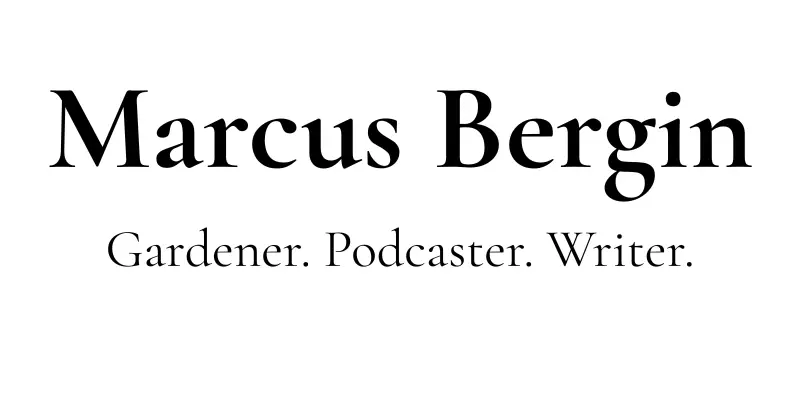
Companion Planting That Just Works: Salvia, Nepeta, and Bowles Mauve
There’s something quietly satisfying about walking into a border that just feels right. You might not be able to put your finger on why, at first, it’s not just the colours, or the structure, or the way the bees hover in that late afternoon light. It’s the way the plants seem to belong together.
That’s the spirit of companion planting, not just the practical side of deterring pests or boosting yields but the relational side of gardening. Plants, like people, thrive in good company.
And when it comes to creating combinations that are both beautiful and beneficial, I keep coming back to three reliable friends: Salvia ‘Caradonna’, Nepeta (catmint), and Erysimum’ Bowles Mauve’. Together, they bring a border to life.
Why This Trio Works
1. Salvia’ Caradonna’
Tall, upright, and full of poise, Salvia nemorosa’ Caradonna’ provides architectural structure and intense colour. The stems are an inky purple-black, supporting luminous violet flower spikes that glow in the evening light. It’s adored by bees and hoverflies, especially in late spring through early summer.
Once it’s established, it’s remarkably drought tolerant. Trim it back after the first flush, and you’ll often get a second show in late summer.
Height: Around 60–70cm
Best for: Strong vertical accents and pollinator appeal
Likes: Full sun, free-draining soil
2. Nepeta (Catmint)
If Salvia is the punctuation mark, Nepeta is the soft sentence. With silvery, scented foliage and loose lavender-blue flowers, it cascades beautifully around edges, paths, or the feet of taller plants. It draws in bees by the dozen and is often in bloom from late spring to midsummer and sometimes beyond if deadheaded.
A bonus: the foliage tends to deter some pests, and it’s a magnet for beneficial insects. Not bad for a plant that’s often overlooked in garden centres.
Height: 30–50cm depending on variety
Best for: Edging, soft movement, and ground cover
Likes: Full sun, tolerates drought once established
3. Erysimum’ Bowles Mauve’
This wallflower doesn’t just flower, it performs. One of the longest-flowering perennials in any garden, Bowles Mauve can start blooming in early spring and keep going through summer, especially if you deadhead regularly. It provides a valuable early nectar source when few others are in bloom.
It’s short-lived, two or three years at best, but easy to replace with cuttings or self-seeded volunteers. It can even flower in winter in mild spots.
Height: Around 45–60cm
Best for: Long-season colour and early pollinator support
Likes: Full sun, well-drained soil, dislike of wet feet in winter
Companion Planting in Practice
These three are more than just pretty together—they actually thrive under the same growing conditions. That’s what makes them ideal companions. They all:
- Prefer full sun
- Appreciate good drainage (ideal for Cotswold gardens or sandy borders)
- Are drought tolerant once established
- Attract bees, butterflies, and hoverflies
From a design perspective, they also offer contrast and rhythm:
- Salvia’s upright spires create a structure
- Nepeta’s airy sprawl softens and unifies
- Erysimum brings longevity and vibrant continuity
And when planted en masse or repeated down a border, they provide that satisfying sense of cohesion that gives a garden its personality.
Where to Use This Trio
- Sunny front gardens that need a bit of impact without a lot of fuss
- Gravel gardens or Mediterranean-style planting
- Mixed perennial borders, especially alongside alliums, penstemons, or ornamental grasses
- Pollinator pathways create nectar from spring to late summer
Tips for Success
- clay
- Water them well during the first season, then let them settle into a drought-tolerant rhythm
- Deadhead Salvia and Erysimum regularly to prolong flowering
- Trim Nepeta back if it gets leggy; it often regrows fresh and tidy
- Take cuttings from Bowles Mauve in late summer as insurance for next year
Final Thoughts
Good companion planting is like a well-cast play; each plant plays its part, but together, they create something greater. Salvia’ Caradonna’, Nepeta, and Bowles Mauve aren’t just a pretty face; they’re practical, long-performing, and full of life. And in a garden, that’s a trio worth planting.
If you’re planning to refresh a border this season, or even just want a small pot combo by the doorstep that brings joy to both you and the bees, give this group a go.
And if you do—let me know how they get on. Gardening is always better when we share what we’ve learned.
This post was written to accompany a discussion over on Facebook—and if you enjoy these kinds of planting ideas, you’re very welcome to join me in my personal group, Gardening with Marcus. It’s a friendly space where we chat about all aspects of gardening, share ideas, and learn together—whether your garden’s in Bishops Cleeve or beyond.
Search “Gardening with Marcus” on Facebook or click here to join the group.
